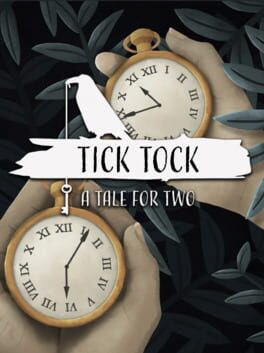I’m not sure if it’s a new trend or if I’m just late to the party, but recently I’ve noticed a lot of asymmetrical escape room games hitting the scene. What makes these interesting is that, despite being multiplayer games that are played on multiple devices, they don’t employ any sort of netcode. The only data transferred between the devices goes through the players first. In effect, the players themselves are the link between devices.
In the case of Tick Tock: A Tale for Two, players explore the game world, discovering puzzles, passing clues back and forth, and unlocking secrets together. Hints in Player One’s game serve as solutions to Player Two’s puzzles and vice versa, so to solve the game’s mysteries you must exchange information. Whether this is done in person or over a voice chat is up to you. Screen sharing is discouraged but serves as a handy backup should your language abilities fail you.
In terms of puzzle mechanics, Tick Tock is similar to other games in its genre, such as Agent A: A Puzzle in Disguise and The Room, although I’d say it feels less tactile than those two. Many puzzles involve words or pictures that one player has to describe to the other. Because of this, people playing in a language that isn’t their own may struggle a bit.
While the game is fun in and of itself, the real draw is what happens outside of the screen. Working through the trials and tribulations within is bound to reveal the underlying relationship dynamics between you and the other player. Who’s in charge? Who’s cleverer? Who likes to screencheat? Who spends too much time playing games? (Hint: It’s not my wife.) Seeing how the game made my partner and I interact with each other was often more interesting than the puzzles themselves. It’s this chance for novel interaction that, despite a short playtime and somewhat underwhelming puzzles, make Tick Tock worth a play.
In the case of Tick Tock: A Tale for Two, players explore the game world, discovering puzzles, passing clues back and forth, and unlocking secrets together. Hints in Player One’s game serve as solutions to Player Two’s puzzles and vice versa, so to solve the game’s mysteries you must exchange information. Whether this is done in person or over a voice chat is up to you. Screen sharing is discouraged but serves as a handy backup should your language abilities fail you.
In terms of puzzle mechanics, Tick Tock is similar to other games in its genre, such as Agent A: A Puzzle in Disguise and The Room, although I’d say it feels less tactile than those two. Many puzzles involve words or pictures that one player has to describe to the other. Because of this, people playing in a language that isn’t their own may struggle a bit.
While the game is fun in and of itself, the real draw is what happens outside of the screen. Working through the trials and tribulations within is bound to reveal the underlying relationship dynamics between you and the other player. Who’s in charge? Who’s cleverer? Who likes to screencheat? Who spends too much time playing games? (Hint: It’s not my wife.) Seeing how the game made my partner and I interact with each other was often more interesting than the puzzles themselves. It’s this chance for novel interaction that, despite a short playtime and somewhat underwhelming puzzles, make Tick Tock worth a play.
